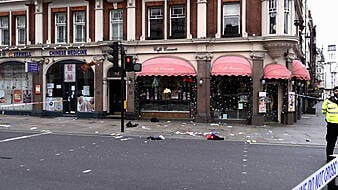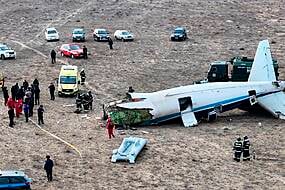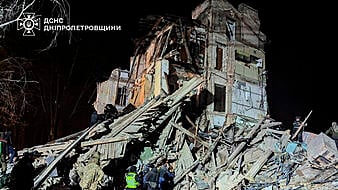Ukraine has lost control of the Chernobyl nuclear site, where forces had waged a fierce battle with Russian troops and there are concerns staff have been taken hostage, according to officials.
Presidential adviser Myhailo Podolyak told The Associated Press that Ukrainian authorities did not know the current condition of the facilities at Chernobyl, the site of the world’s worst nuclear disaster.
“After the absolutely senseless attack of the Russians in this direction, it is impossible to say that the Chernobyl nuclear power plant is safe,” he said.
However, Ukraine’s nuclear energy regulatory agency later said that higher than usual gamma radiation levels had been detected in the area.
The State Nuclear Regulatory Inspectorate attributed the rise to a “disturbance of the topsoil due to the movement of a large amount of heavy military equipment through the exclusion zone and the release of contaminated radioactive dust into the air”.

The White House expressed outrage at “credible reports” from Ukrainian officials that staff at the shuttered Chernobyl nuclear plant have been taken hostage by Russian troops.
Press secretary Jen Psaki said on Thursday that “we condemn it and we request their release”.
Ms Psaki said the US has no assessment on the state of the plant where radioactivity is still leaking decades after the worst nuclear disaster in history.
But she said hostage taking could hamper efforts to maintain the nuclear facility and is “incredibly alarming and greatly concerning”.
Ms Psaki spoke after Alyona Shevtsova, an adviser to the commander of Ukraine’s Ground Forces, wrote on Facebook the staff at the Chernobyl plant had been “taken hostage” when Russian troops seized the facility.
Ukrainian President Volodymyr Zelensky had announced several hours earlier that Russian forces were trying to seize the Chernobyl nuclear plant.
A nuclear reactor at the plant 80 miles north of Ukraine’s capital, Kyiv, exploded in April 1986, spewing radioactive waste across Europe.

The exploded reactor was covered by a protective shelter several years ago to prevent radiation leaks.
A Ukrainian official said Russian shelling hit a radioactive waste repository and an increase in radiation levels was reported.
The official spoke on condition of anonymity to discuss the sensitive matter.
It was not immediately possible for experts to access the repository to assess damage before Russian forces overtook the site.
The International Atomic Energy Agency said it is following the situation in Ukraine “with grave concern” and appealed for maximum restraint to avoid any action that may put Ukraine’s nuclear facilities at risk.
Rafael Mariano Grossi, the IAEA’s general director, said Ukraine has informed the Vienna-based agency that ”unidentified armed forces” have taken control of all facilities at the plant and that there had been no casualties or destruction at the industrial site.
Mr Grossi said it is “of vital importance that the safe and secure operations of the nuclear facilities in that zone should not be affected or disrupted in any way”.
Edwin Lyman, director of nuclear power safety at the Union of Concerned Scientists in Washington, said: “I can’t imagine how it would be in Russia’s interest to allow any facilities at Chernobyl to be damaged.”
In an interview, Mr Lyman said he is most worried about spent fuel stored at the site, which has not been active since 2000. If the power to cooling pumps is disrupted or fuel-storage tanks are damaged, the results could be catastrophic, he said.
Reactor Number Four at the power plant exploded and caught fire deep in the night on April 26, 1986, shattering the building and spewing radioactive material high into the sky.
Soviet authorities made the catastrophe even worse by failing to tell the public what had happened, angering European governments and the Soviet people.
The two million residents of Kyiv were not informed despite the fallout danger, and the world learned of the disaster only after heightened radiation was detected in Sweden.
The building containing the exploded reactor was covered in 2017 by an enormous shelter aimed at containing radiation still leaking from the accident. Robots inside the shelter work to dismantle the destroyed reactor and gather up the radioactive waste.
It is expected to take until 2064 to finish dismantling the reactors. Ukraine decided to use the deserted zone as the site for its centralised storage facility for spent fuel from the country’s other remaining nuclear power plants.







